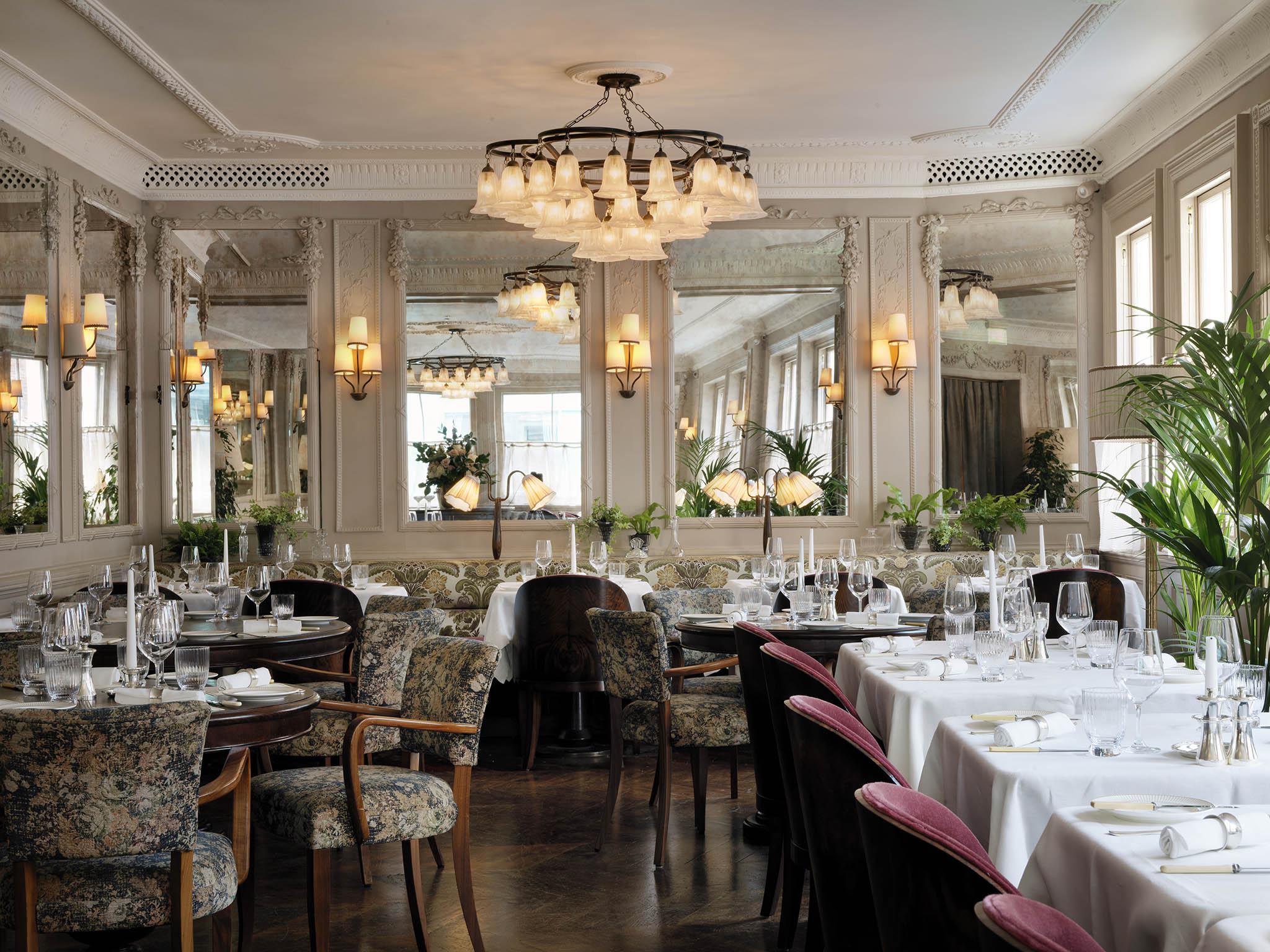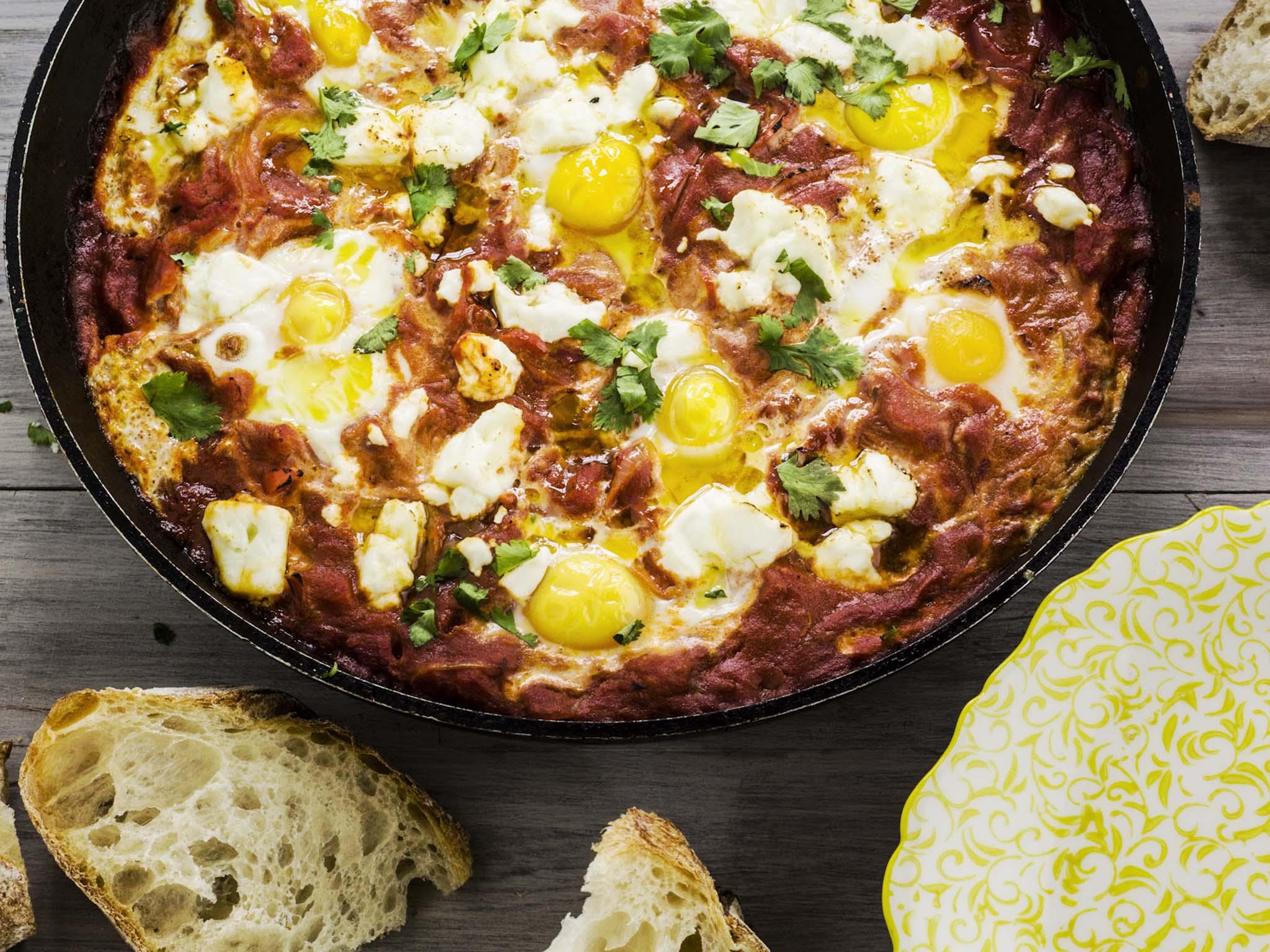Brunch on Saturday: Dine like a 19th century aristocrat at Kettner's Townhouse
Megan Townsend follows in the footsteps of Wilde, Churchill and Christie with a budget, but well executed, brunch at a Soho institution... while we share a shakshuka at home

Your support helps us to tell the story
From reproductive rights to climate change to Big Tech, The Independent is on the ground when the story is developing. Whether it's investigating the financials of Elon Musk's pro-Trump PAC or producing our latest documentary, 'The A Word', which shines a light on the American women fighting for reproductive rights, we know how important it is to parse out the facts from the messaging.
At such a critical moment in US history, we need reporters on the ground. Your donation allows us to keep sending journalists to speak to both sides of the story.
The Independent is trusted by Americans across the entire political spectrum. And unlike many other quality news outlets, we choose not to lock Americans out of our reporting and analysis with paywalls. We believe quality journalism should be available to everyone, paid for by those who can afford it.
Your support makes all the difference.Brunching out...
Kettner’s Townhouse, named after its founder, August Kettner, who was rumoured to have been a chef to Napoleon III, was opened in 1857 and is thought to be one of London’s first French restaurants.
It gained fame for remaining open during both the First and Second World Wars, and counts among past regulars King Edward VII, Churchill, Agatha Christie, Oscar Wilde, Bing Crosby and Margaret Thatcher – and was set to host me, Megan Townsend, from St Helens, who has no idea which knife is for what and regularly talks with her mouth full.

Fear not, Kettner’s has recently undergone a somewhat modern (as modern as a Georgian restaurant can be anyway) makeover. Now owned by the exclusive Soho House, its new slogan is “open to all” and has created a “weekend lunch” menu to meet growing popularity of brunches in the rest of the city.
When I arrive, it’s a quiet Saturday afternoon and the cobbled Soho street Kettner’s is nestled on is completely emptied of its usual West End people traffic.
The Grade II-listed building is grand yes, but it’s sort of reminiscent of the really great seaside pubs you visited as a child – the interior is invisible from the outside, so you’re judging it purely on the menus posted on the door. Curiosity flares and you want to step in just to see what the food smells like, or what the doily curtains are hiding.
Inside, the restaurant is quiet – with just a dim hum of conversation in the background. To reach the dining room you must pass through the champagne bar, which features a marble bar top and one of those mirrored art deco spirit shelves from the Great Gatsby. The dining room is much lighter, with plants and flowers preventing it from feeling too much like a museum. It’s the kind of place where people eat in period movies, and I’m certain Churchill wouldn’t look out of place in one of today’s corner booths.

Rouge velvet chairs sit neatly beneath pristine white tablecloths. It’s very obvious that everything in the room is an antique – my eyes widen at the silver champagne bucket beside each table. Surprisingly, I’m asked where I want to sit by staff, who are dressed very smartly but are warm and inviting. The other guests aren’t the London elite I’m expecting, but families and friends enjoying a rather loud brunch, grinning at each other as they cheekily self-pour champagne away from the watching eye of the staff.
The menu is even more surprising, because it’s so affordable. Despite the crystalline, luxurious baroque interior, starters range from £6 to £10 and mains are between £15 and £25. To start, I opt for the Devon crab (£14), which is salty-sweet and refreshing with sea purslane, salted apple and lovage. For the veggie option, my guest picks the Wye Valley asparagus (£10), which has been gently cooked and is still pleasantly soft with a generous helping of hollandaise sauce, topped with a poached egg.
For the mains, Kettner’s continues its focus on locally sourced fresh ingredients. We are warned before ordering that some courses don’t come with a side order so they are sometimes recommended. However, my truffle roast banham chicken (£26) did not require one. The chicken was sectioned to reveal a truffle-infused duxelles – a mixture of mushrooms, onions and shallots that takes on a similar texture and rich flavour to black pudding. It was served on a bed of pommes anna, another classic French element: potatoes cut thinly, layered on top of each other and coated in butter. My guest opted for an unpretentious brunch classic: steak hache (£16), served with bacon relish and blue cheese fries.
Kettner’s drinks’ menu took hold of us in the form of testing the champagne bar. Between 5pm and 7pm it offers a £5 and £7 cocktail/snack menu, which we try. I get a classic, well executed peach bellini for £7 and my guest opts for a Campari and soda, £5.
From the cocktail menu – not wanting to leave any aspect of Kettner’s uninvestigated for you – I opt for a tangy brandy house punch (£10) with Remy Martin VSOP, vermouth, grapefruit sherbert, apricot and earl grey tea. My guest opts for a Romily 28 (£12) with Star of Bombay, mango, lemon and tesulat.
Kettner’s Townhouse has very clearly been the worst kept secret of Soho’s rich and famous for centuries, and now it’s yours. For anyone wanting to have a really expensive, really bouji Saturday afternoon, on a budget, Kettner’s Townhouse will tick all the boxes.
Kettner’s Townhouse, 29 Romilly St, Soho, London W1D 5HP; 020 7734 5650; kettnerstownhouse.com
Brunching in...

Shakshuka
We think shakshuka is about to take over the world – for a very good reason. It’s one of the best breakfasts ever, plus it’s incredibly easy to make. This is a communal meal: more than one person can dip into the pan with you, so be sure to share it with someone you love. Making shakshuka is also a perfect opportunity to look through your fridge for any veg that needs using up, and add it to the pan. There are just a few rules to bear in mind. Leave the sauce fairly liquid – that way, it’s much easier to mop out of the pan with fresh bread.
Serves 4
½ tsp caraway seeds
50ml olive oil
1 onion, thinly sliced
1 red pepper, seeded and thinly sliced
½ tsp dried chilli flakes
½ tsp ground cumin
½ tsp smoked, hot or sweet paprika, to taste
3 tomatoes, chopped
2 x 400g cans chopped tomatoes
8 eggs
50g feta
Extra virgin olive oil, for drizzling
Handful of coriander leaves, chopped
Sea salt and freshly ground
Black pepper, to taste
1 whole good, white sourdough loaf, sliced, to serve
Heat a large, ovenproof frying pan or saute pan over a medium heat and toast the caraway seeds for 2 minutes, until very fragrant. Pour in the olive oil and let it warm through, frying the toasted seeds for a minute or two.
Add the sliced onion and pepper and cook, stirring occasionally, until jammy and softened – around 10-15 minutes. Add the chilli flakes, cumin and paprika and cook for a further 2 minutes, until fragrant. Tip in the chopped fresh tomatoes, give everything a good stir, and cook for 5 minutes more until they have completely collapsed and given up their juices. Add the canned tomatoes and bring to the boil. Taste, season with salt and pepper, then cook for 2 minutes more. Reduce the heat and simmer for at least 15-20 minutes, until the sauce is dark, rich and flavoursome. If it becomes too thick, you can always thin it with a little water.
If necessary, you can remove from the heat and leave the sauce to cool down until you are ready to serve, at which point simply heat it up and carry on to the next stage. Preheat the oven to 200C/gas mark 6. Take a wooden spoon and hollow out a little well in the surface of the tomato sauce. Gently break an egg into it, taking care not to break the yolk. Continue to plant the eggs around the pan until you’ve added them all. Take a fork and bury the egg whites under the sauce while leaving the yolks on show.
Crumble the feta over the top in between the yolks, drizzle the top with olive oil to prevent it from burning and give it a lovely shine, and place the pan in the oven. After 5 minutes, the yolks should be just set. After 5 minutes, the yolks should be set – bake them for less if you’d like them runny. Sprinkle over the chopped coriander leaves and drizzle with olive oil to serve. Put the pan directly on the table along with the best white sourdough you can find, sliced, or even toasted, if you like. The traditional, communal way to eat shakshuka is straight out of the pan, scooping it up with pieces of bread, but plates are allowed if you really insist.
Variation: This sauce is so versatile – it’s amazing served with baked fish, for example. To make it meatier, add grilled merguez sausages or slices of cooked chorizo.
Recipe from ‘Gail’s Artisan Bakery Cookbook’ by Gail Mejia and Roy Levy. Published by Ebury Press (£22.50)
Join our commenting forum
Join thought-provoking conversations, follow other Independent readers and see their replies
Comments